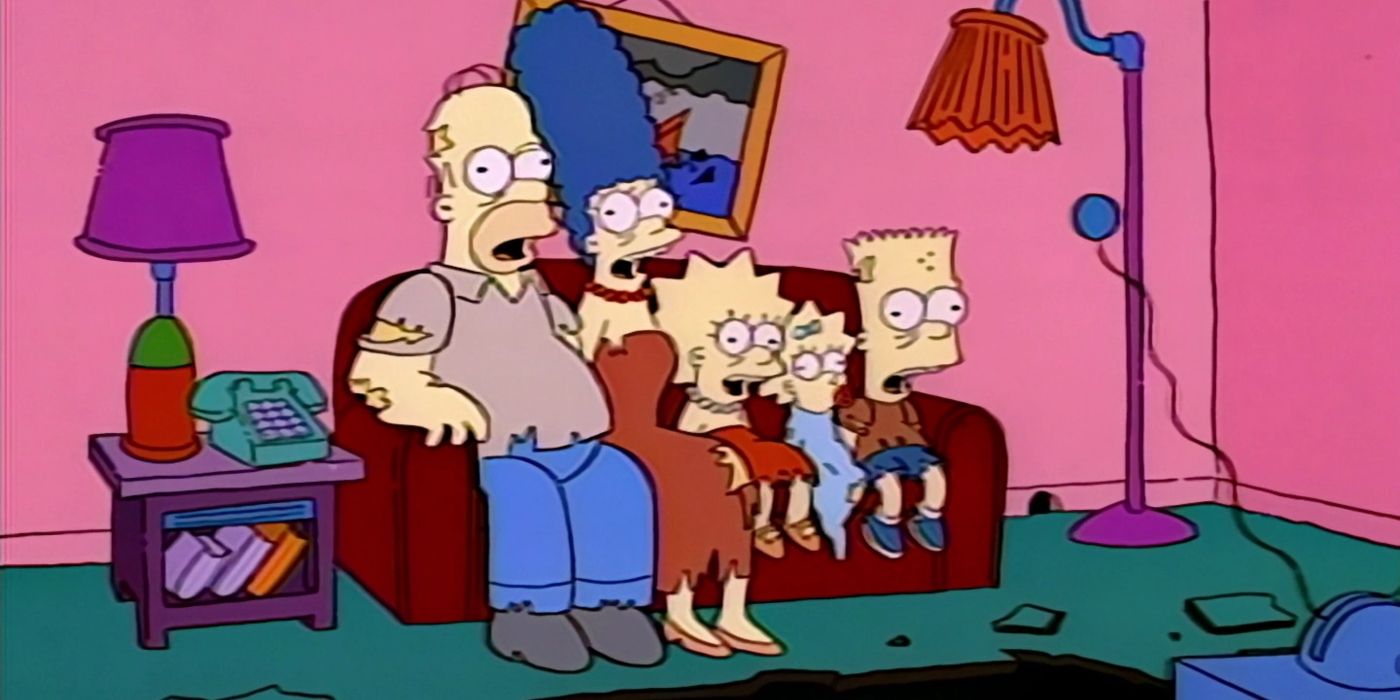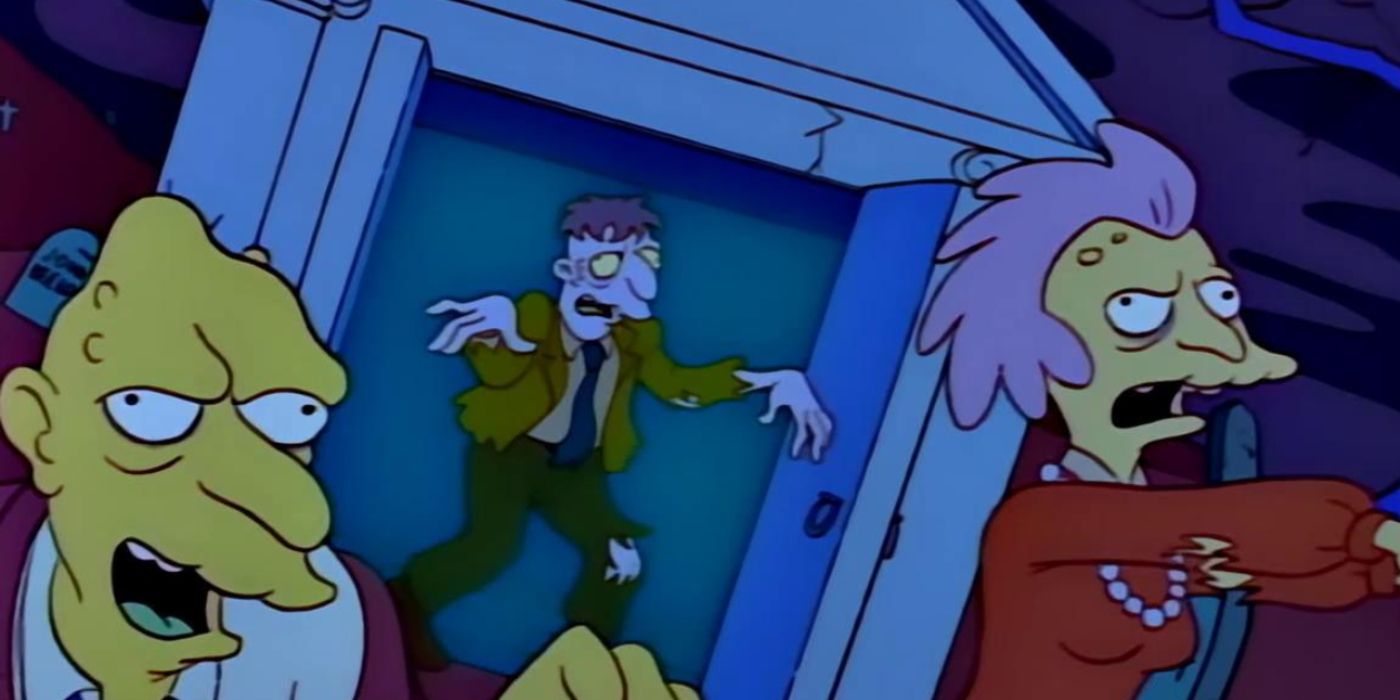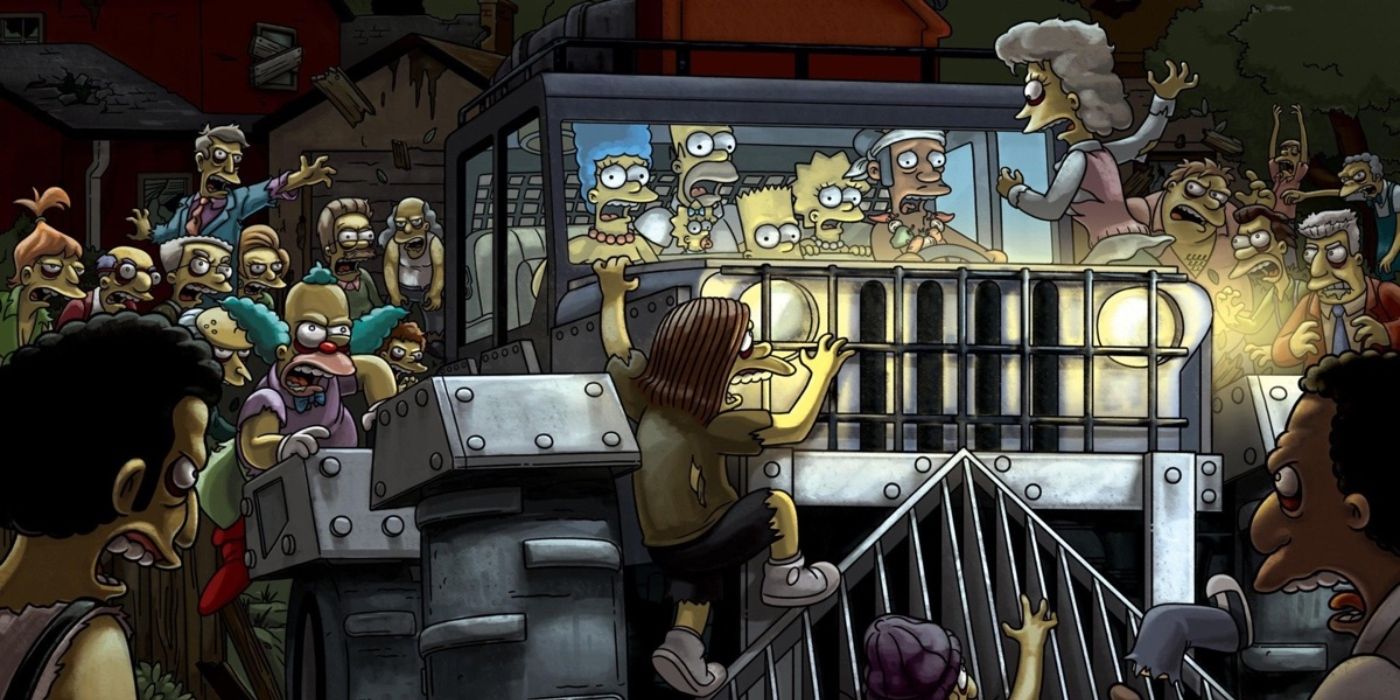Zombies are one of the fundamental monsters of the 21st century, with numerous films, shows, comics, games and other forms of media helping elevate the undead into the upper echelon of modern western culture. They've also evolved rapidly across that era, transforming from one specific kind of monster into something far different.
Thanks to its long-running nature and habit of parodying popular horror stories and tropes in each successive "Treehouse of Horror" special, The Simpsons can be used as a perfect case study to show how zombies evolved in film from the days of George Romero-style undead to the more modern take on the concept.
How Treehouse of Horror Did Zombies In 1992
Season 4's "Treehouse of Horror III" features the segment "Dial 'Z' for Zombies." After discovering an ancient book of powerful spells in the school library, Bart tries using the book to resurrect Lisa's dead cat Snowball I. Instead, he inadvertently summons a horde of the undead, unleashing them onto Springfield. Many of the town's inhabitants -- including Krusty the Clown, Principal Skinner, and Ned Flanders -- are shown being killed and transformed into zombies. Ultimately, the Simpsons are able to breach the school -- with Homer shooting down multiple zombies, including, most famously, Flanders -- while Bart performs a spell to undo the curse's effects and stop the undead.
"Dial 'Z' for Zombies" is a silly early entry in the Treehouse of Horror subseries, even when considering that -- compared to other early versions of the horror anthology -- lacked the body counts that usually occur in these episodes. The zombies all shamble around slowly, overwhelming people and consuming their brains. Although the zombies retain some semblance of their personalities and intelligence (as in Return of the Living Dead), they're driven by their need for brains. The zombies reflect the version of the monster of the era -- the kind of zombies from the George Romero films like Dawn of the Dead and Day of the Dead. The episode included a Romero-esque piece of social commentary embedded in the ending. After saving the day and defeating the zombies, the Simpsons return home and watch TV -- becoming mindless zombies themselves before the television.
How Treehouse of Horror Did Zombies In 2009
The next time a Treehouse of Horror sequence directly targeted zombie films, it was a far more frightening portrayal. "Don't Have a Cow, Mankind" from Season 21's "Treehouse of Horror XX." After Krusty reveals a new form of hamburger, it quickly spreads a new virus that transforms victims into feral and cannibalistic monsters. Springfield collapses into ruin as most of the town is infected. The Simpsons survive the chaos, and upon discovering Bart has a natural immunity, struggle to get him to a military safe zone while contending with the hordes of "munchers" they encounter on the way. The short is arguably one of the scariest Treehouse of Horror segments, playing the Munchers are pure threats that quickly rip apart the handful of survivors the family encounters. There's little comedy to be found in them, with the Munchers instead being portrayed as genuinely vicious and horrifying takes on zombies.
The Munchers more or less work as the modern "fast" zombie that first became popular with films like 28 Days Later and Dawn of the Dead. The Munchers showcase how zombies evolved in pop culture since the days of "Dial 'Z' for Zombies" had aired almost twenty years previously. They're no longer goofy and caused by supernatural forces, but become a terrifying scourge caused by the spread of a virus. Having gone through a period of serious reinvention and cultural reinvigoration -- thanks to properties like The Walking Dead -- zombies now stand as something of a mix of the two approaches. But thanks to its unique long-running status, The Simpsons had the chance to showcase that evolution firsthand -- and poke fun at both approaches to the classic horror staple.



